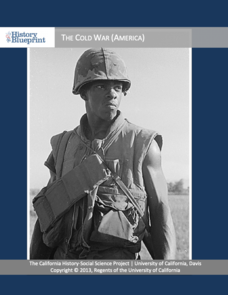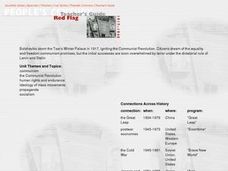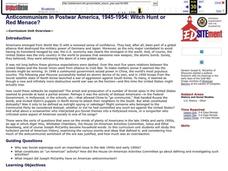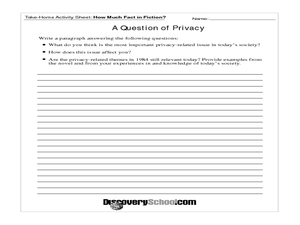University of California
Roots of the Cold War
When and how did the Cold War begin? To answer this question, you will not find a better-organized, in-depth, activity- and inquiry-based resource than this! Executing best teaching practices throughout, each portion of this inquiry...
BAE Systems
The Cold War
The Soviet Union's decision to block West Berlin from access by the Western allies began an international hostility that extended into the rest of the twentieth century. Class members examine both Harry Truman's and Joseph Stalin's...
US National Archives
Eastern Europe 1939-45 — Ukraine
Was Joseph Stalin desperate or exaggerating the USSR's need for assistance on the Eastern Front in 1942? History students examine two differing opinions on Stalin's position and the reality of the Eastern Front just three years before...
National Endowment for the Humanities
How "Grand" and "Allied" Was the Grand Alliance?
Learn more about the Grand Alliance with a scaffolded lesson plan that includes four activities. Class members use primary sources to complete a map exercise, understand the goals and objectives of each individual nation, and participate...
A&E Television
The World Wars
Contemporaneously known as The Great War, World War I had never seen its match on the global stage—until World War II. An engaging set of resources designed to extend a viewing of the History Channel's The World Wars features discussion...
University of California
The Cold War (America)
The Cold War—with its roots in World War II—impacts the world today. Using an extensive curriculum, scholars consider its impact through primary sources, including speeches and propaganda, as well as other skills-enhancing activities. An...
Teach It History
Crisis in Berlin: Decisions Game!
The Cold War did not begin with a bang, but with a swift tactic that reflected the Soviet Union's growing distrust of its former Allies. High schoolers choose either the USA or the USSR in a role play activity as they analyze why each...
Carolina K-12
The Major Conferences of World War II
Young historians create a 1940's news radio broadcast on the five major World War II conferences, including the Atlantic, Casablanca, Tehran, Yalta, and Potsdam.
Curated OER
Communist Revolution
High schoolers examine the Russian Communist Revolution of 1917. They watch and discuss a video, take notes and answer video discussion questions, and read and evaluate newspaper articles about how Lenin and Stalin are viewed today in...
Curated OER
Dictators
Students can learn about the elements of a dictatorship through these lessons.
Curated OER
Witch Hunt or Red Menace? Anticommunism in Postwar America, 1945-1954
Students investigate what constitutes an "un-American" activity and why Soviet espionage was such an important issue in the 1940's and 1950's. Joseph McCarthy's impact on American anticommunism is examined in this lesson. There are three...
Curated OER
League of Nations
Ninth graders examine the purposes and mandate system of the League of Nations. They watch a PowerPoint presentation on the mandate system and complete a fill-in-the-blank worksheet, and participate in a "pick your side" activity.
Curated OER
World War II
Students research World War II and discuss how conflicts in the war lead to change. In this World War II lesson plan, students read books, watch movies, complete activity sheets, and answer questions all researching the war.
Curated OER
End of Mandates and the Middle East
Ninth graders investigate the original mandates of the League of Nations regarding the Middle East. They listen to a lecture/PowerPoint presentation on the end of the mandate system, and complete a fill-in-the-blank worksheet that...
Curated OER
1984: How Much Fact in Fiction?
Students compare and contrast the society in Orwell's 1984 with modern society. For this 1984 lesson, students research the historical climate in which Orwell wrote the novel. Students create a comparison chart of privacy issues in the...
Curated OER
Sadness in Srebrenica
Students explore the atrocities committed during the war in Bosnia from 1992 to 1995 that prompted an apology from the international community in 2005.
Curated OER
What Fostered the Axis?
Ninth graders present the major cultural, economic and political forces in Germany, Italy & Japan that allowed for the rise and dominance of totalitarian regimes in that country. They discuss how the above listed forces brought the...
National Archives (UK)
The Learning Curve: Allies at War
An extensive site chronicling the public consensus shown to the media among Allied members: the USSR, Great Britain, and the USA. Gives ample primary sources and student activities.



















